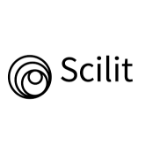It was to assess vasoprotective effects of ω-3 polyunsaturated fatty acids in cerebral ischemia.
The experiments were carried out on 42 male outbred white rats weighing 260 ± 20 g. Modeling of cerebral ischemia was carried out under conditions of intravenous thiopental anesthesia (40-50 mg/kg). The studies used models of subtotal, partial and stepwise subtotal cerebral ischemia. The table shows the experimental groups and the number of animals in them. Subtotal cerebral ischemia (SCI) was modeled by simultaneous ligation of both common carotid arteries (CCA). Partial cerebral ischemia (PCI) was modeled by ligating one CCA on the right. Stepwise subtotal CI (SSCI) was performed by sequential ligation of both CCA with an interval of 1 day (subgroup 1), 3 days (subgroup 2), or 7 days (subgroup 3). To study the effects of omega-3 polyunsaturated fatty acids (ω-3 PUFA), animals with CI were injected intragastrically with the drug “Omegamed” (SCI+ω-3 PUFA) at a dose of 5g/kg body weight for a week. The control group consisted of sham-operated rats of the same sex and weight. Neurological deficits were assessed in the “muscle strength”, “swimming test” and “open field” tests after 5-6 hours of the ischemic period.
With a stepwise bilateral ligation of both common carotid arteries with an interval of 1 day, neurological disorders were most pronounced, which indicates an aggravation of neurological deficit with a reduction in the time between CCA dressings. In rats with SCI, the changes were more pronounced than with PCI, but less than with SCI. The least pronounced changes were noted in the 3rd subgroup (the interval between CCA dressings was 7 days). Studies have shown the dependence of the severity of brain damage in SSCI on the interval between the cessation of blood flow in both CCA. At a 7-day interval between CCA dressings, compensatory mechanisms were activated, which prevented the development of morphological changes and neurological deficits. When CCA was ligated with an interval of 1 day, the degree of neurological deficit was maximal, which indicates insufficient implementation of compensatory mechanisms. Compared with the control group, the rats of the “SCI+ω3-PUFA” group retained neurological deficit, the muscle strength indicator was 86% less (p<0.05), the swimming duration - by 63% (p<0.05), the number of crossed squares - by 55% (p<0.05), the number of washes - by 62% (p<0.05), the number of racks - by 62.5% (p<0.05) and the number of bowel movements - by 60% (p<0.05). However, in comparison with the SCI group, the neurological deficit was less pronounced. There was an increase in muscle strength by 67% (p<0.05), swimming duration by 37.5% (p<0.05) and the number of squares crossed in the open field test by 31% (p<0.05), which indicates the presence of a corrective action in the ω-3 polyunsaturated fatty acids preparation.
The introduction of the preparation of ω-3 polyunsaturated fatty acids has a corrective effect in conditions of subtotal cerebral ischemia, contributing to a lesser severity of manifestations of neurological deficit (an increase in muscle strength, duration of swimming and the number of squares crossed in the open field test).
Vasoprotective Effects of Omega-3 Polyunsaturated Fatty Acids in Cerebral Ischemia













